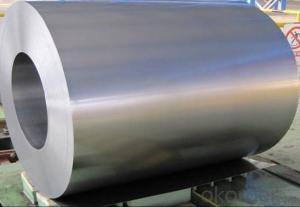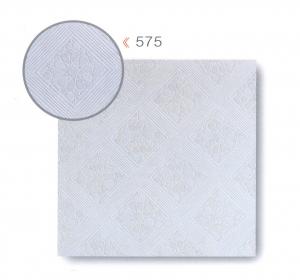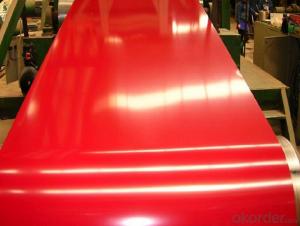Pvd Stainless Steel
Pvd Stainless Steel Related Searches
Best Paint For Stainless Steel Blanket Insulation For Steel Buildings Primer For Galvanized Steel Foam Filter For Stainless Steel H S Code For Stainless Steel Surface Grinding Wheels For Stainless Steel Surface Grinding Wheels For Hardened Steel Hole Saw For Stainless Steel Paint For Stainless Steel Stainless Steel For BbqHot Searches
Steel Mesh Panels For Sale Price For Stainless Steel Scrap Scrap Price For Stainless Steel Price For Stainless Steel Stainless Steel Tank For Sale Stainless Steel Sheets For Sale Cheap High Tea Sets For Sale Stainless Steel Tanks For Sale Stainless Steel For Sale High Density Fiberboard For Sale Solar Hot Water Collectors For Sale Scaffolding For Sale In Uae Scaffolding For Sale In Ireland Scaffolding For Sale In Houston Type Of Inverter For Solar Price Of Shipping Containers For Sale Types Of Inverter For Solar Stock Price For Aluminum Used Solar Inverter For Sale Steel Mesh Panels For SalePvd Stainless Steel Supplier & Manufacturer from China
Okorder.com is a professional Pvd Stainless Steel supplier & manufacturer, offers integrated one-stop services including real-time quoting and online cargo tracking. We are funded by CNBM Group, a Fortune 500 enterprise and the largest Pvd Stainless Steel firm in China.Hot Products
FAQ
- Indeed, stainless steel sheets prove to be an excellent choice for food processing purposes. The food and beverage industry extensively utilizes stainless steel owing to its exceptional properties and hygienic characteristics. Notably, it does not react with food, is highly resistant to corrosion, and does not introduce any taste or smell to the processed food. Moreover, stainless steel is effortless to clean and upkeep, rendering it an optimal selection for food processing machinery, worktops, and various other surfaces. Additionally, it withstands elevated temperatures and effectively resists bacterial proliferation, thereby establishing itself as a reliable and secure material for food processing activities.
- The bending limits of stainless steel sheets depend on various factors such as the thickness, grade, and temper of the material. However, generally speaking, stainless steel sheets can be bent to a certain degree without causing permanent deformation or cracking. It is important to consult specific bending charts or guidelines provided by manufacturers to determine the precise bending limits for a particular stainless steel sheet.
- Stainless steel sheets have the capability of being utilized within the medical industry. This is because stainless steel is a favored material within the medical field due to its exceptional resistance against corrosion, its remarkable strength, and its ability to endure. It is commonly employed for a diverse array of purposes, encompassing medical instruments, surgical tools, dental equipment, implants, and medical machinery. Moreover, stainless steel sheets are uncomplicated to cleanse and sterilize, rendering them perfect for maintaining hygienic conditions within medical settings. Furthermore, stainless steel is biocompatible, signifying that it is harmonious with human tissues and does not elicit any unfavorable reactions, thereby making it a secure option for medical applications. All in all, stainless steel sheets are exceedingly appropriate for usage within the medical industry due to their myriad advantageous qualities.
- The pricing options for stainless steel sheets can vary depending on several factors. The first factor is the grade of stainless steel being used. Stainless steel is available in different grades, with each grade offering different levels of corrosion resistance and durability. Higher-grade stainless steel sheets typically come at a higher price point. Another factor that affects the pricing is the thickness and size of the sheets. Thicker and larger stainless steel sheets tend to be more expensive due to the increased amount of raw material required and the additional processing involved. Furthermore, the finish of the stainless steel sheets can also impact the pricing. Stainless steel sheets can have different finishes such as brushed, mirror, or matte. Finishes that require more extensive processing and polishing may come at a higher cost. Additionally, market conditions, including the supply and demand for stainless steel, can influence the pricing. Prices can fluctuate based on factors like raw material costs, production capacity, and global economic conditions. It is also important to consider the supplier or manufacturer from whom you are purchasing the stainless steel sheets. Different suppliers may offer different pricing options based on their overhead costs, production capabilities, and market positioning. In summary, the pricing options for stainless steel sheets depend on factors such as the grade, thickness, size, finish, market conditions, and the supplier. It is advisable to research and compare prices from different sources to find the most suitable option for your specific requirements.
- Indeed, high-traffic areas can benefit from the use of stainless steel sheets. Renowned for their durability, strength, and resistance to corrosion, stainless steel proves to be an outstanding option for spaces frequented by many individuals. It possesses the ability to endure continuous usage and mistreatment, encompassing scratches, dents, and impacts, all while maintaining its structural integrity. Moreover, stainless steel sheets present themselves as effortless to clean and maintain, rendering them an optimal choice for regions necessitating frequent cleaning and disinfection. In summary, stainless steel sheets offer a dependable and enduring solution for high-traffic areas.
- How to clean stainless steel plate cleaning?
- Grease can be applied to soft cloth to dissolve alcohol. I was impressed with how the grease turned off my pizza oven. Some thicker deposits did not respond once to a cloth, but I had been rubbing them with alcohol and completely disappeared within one or two minutes. With other methods, it is important to rinse off the alcohol and dry it so that it has a shiny metal.
- Stainless steel sheets are typically able to resist hydrochloric acid. The corrosion resistance of stainless steel is well-known, as it has been proven to endure various types of acids, including hydrochloric acid. Nevertheless, the level of resistance may differ depending on the stainless steel's grade and composition. Extended exposure to concentrated hydrochloric acid or elevated temperatures may result in corrosion or harm. Hence, it is advisable to seek guidance from a stainless steel expert or consult the corrosion resistance chart for the specific stainless steel grade to ascertain the appropriateness of stainless steel sheets for a specific application involving hydrochloric acid.
- Stainless steel sheets are typically manufactured through a process called hot rolling. First, raw stainless steel blocks are heated in a furnace until they reach a specific temperature. Then, they are passed through a series of rollers that apply pressure to the blocks, gradually reducing their thickness. This process elongates the metal and creates sheets of stainless steel with the desired dimensions. After hot rolling, the sheets undergo annealing, a heat treatment process that enhances their strength and corrosion resistance. Finally, the sheets are cut into the desired size and undergo further processing, such as surface finishing or coating, depending on their intended use.















































